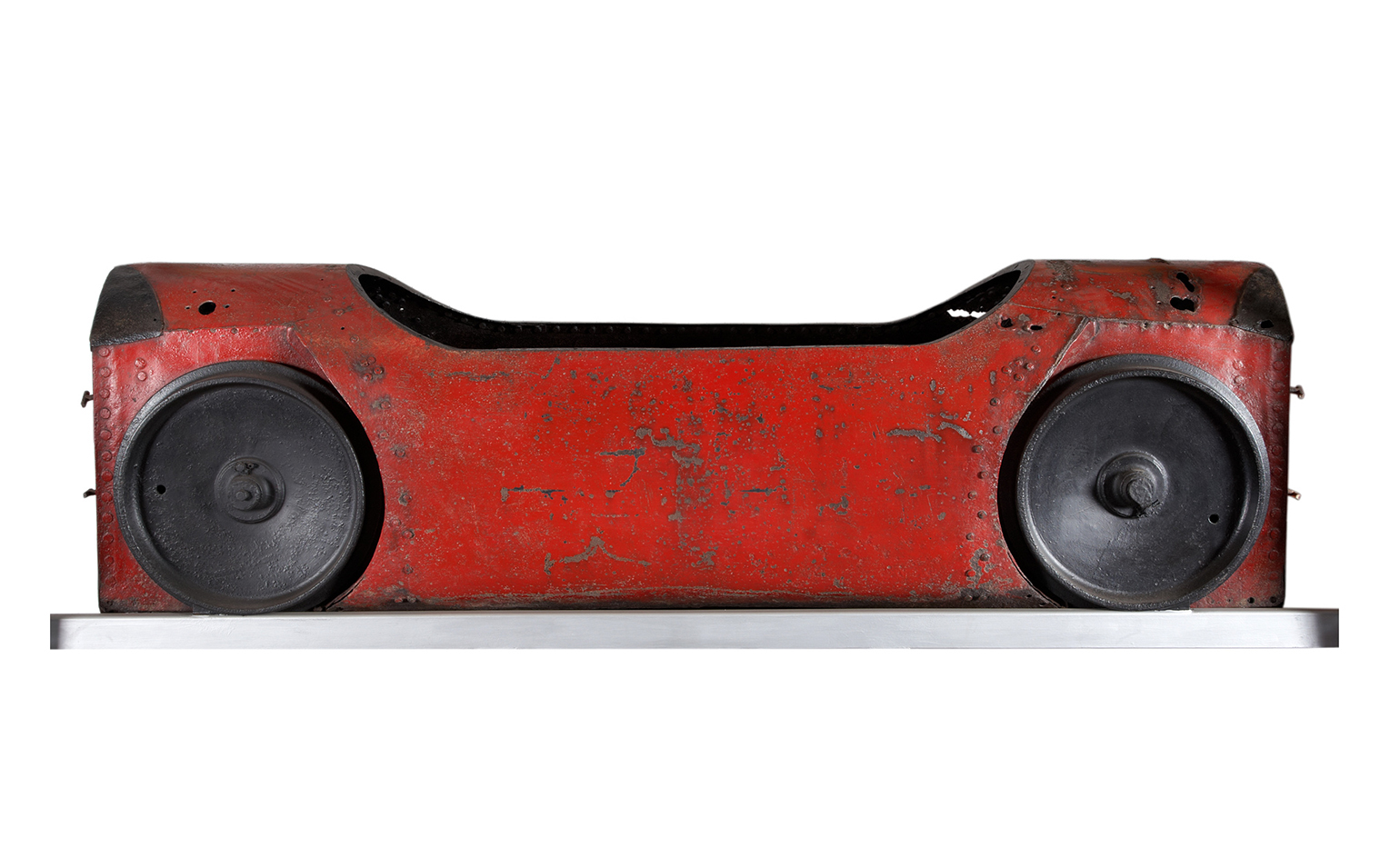All aboard: plans revealed for London's underground Mail Rail tunnels

Located in the depths below the Mount Pleasant Mail Centre in Clerkenwell, the Royal Mail’s Mail Rail is one of London’s greatest subterranean secrets. A 6.5 mile long series of underground tunnels and railway lines, it transported post and packages from Whitechapel to Paddington from 1927 until 2003, all inter-linked and accessible from a series of sorting offices along the route.
It was notably the world's first driverless and electric railway. The initiative was sadly scrapped in 2003, and the workforce - once 200-strong - is now reduced to three people, who occasionally man the stations and carry out necessary engineering maintenance.
Things, however, are about the change. Thanks to the National Lottery's Heritage Fund, the Mail Rail has now received funding of £26m to construct an accompanying Postal Museum and to reopen a small section of the Mail Rail network and its facilities to celebrate this unique historical rail project.
The centre, due to open in 2017, will no longer be transporting mail, but will finally become accessible to the general public for the first time in its 100-year-old history, showcasing the rich legacy of the Royal Mail, while also offering the exciting opportunity to ride a 1km portion of the small scale tunnels.
The Postal Museum, set to located a short walking distance from the tunnel, will ‘reveal five centuries of British social and communications history’ viewed through the eyes of the postal service. Designed by Feilden Clegg Bradley Studios, the centre will provide temporary and permanent galleries, a learning hub, state-of-the-art research facilities and a post-themed, family play area, which hopes to attract 186,000 visitors and 10,000 students within the first year alone.
A groundbreaking opening ceremony, located underground within the Mail Rail network, has just been held to mark the start of construction, attended by director of postal heritage Adrian Steel, historian Dan Snow and Stuart Hobley of the Heritage Lottery Fund.

Pictured here, one of Royal Mail's old pneumatic wrought iron rail cars. These carriages ran on a previous temporary mail transportation system, located nine feet below ground at Euston station from 1863 until 1866

An insight into the Mail Rail's future interior space, showing the access visitors will have into the underground area. This has never been seen by the public in its 100 years of operation

The upcoming Postal Museum will be located a short walking distance from the Mount Pleasant Mail Centre. It will include exhibits, a family play facility and a state-of-the-art research centre

The Postal Museum will be housed in an existing building, which will be transformed by Feilden Clegg Bradley Studios
INFORMATION
For more information, please visit the Royal Mail website
Photography: Miles Willis, The Postal Museum
Receive our daily digest of inspiration, escapism and design stories from around the world direct to your inbox.
-
 Winston Branch searches for colour and light in large-scale artworks in London
Winston Branch searches for colour and light in large-scale artworks in LondonWinston Branch returns to his roots in 'Out of the Calabash' at Goodman Gallery, London ,
-
 The most anticipated hotel openings of 2026
The most anticipated hotel openings of 2026From landmark restorations to remote retreats, these are the hotel debuts shaping the year ahead
-
 Is the future of beauty skincare you can wear? Sylva’s Tallulah Harlech thinks so
Is the future of beauty skincare you can wear? Sylva’s Tallulah Harlech thinks soThe stylist’s label, Sylva, comprises a tightly edited collection of pieces designed to complement the skin’s microbiome, made possible by rigorous technical innovation – something she thinks will be the future of both fashion and beauty
-
 Step inside this perfectly pitched stone cottage in the Scottish Highlands
Step inside this perfectly pitched stone cottage in the Scottish HighlandsA stone cottage transformed by award-winning Glasgow-based practice Loader Monteith reimagines an old dwelling near Inverness into a cosy contemporary home
-
 This curved brick home by Flawk blends quiet sophistication and playful details
This curved brick home by Flawk blends quiet sophistication and playful detailsDistilling developer Flawk’s belief that architecture can be joyful, precise and human, Runda brings a curving, sculptural form to a quiet corner of north London
-
 A compact Scottish home is a 'sunny place,' nestled into its thriving orchard setting
A compact Scottish home is a 'sunny place,' nestled into its thriving orchard settingGrianan (Gaelic for 'sunny place') is a single-storey Scottish home by Cameron Webster Architects set in rural Stirlingshire
-
 Porthmadog House mines the rich seam of Wales’ industrial past at the Dwyryd estuary
Porthmadog House mines the rich seam of Wales’ industrial past at the Dwyryd estuaryStröm Architects’ Porthmadog House, a slate and Corten steel seaside retreat in north Wales, reinterprets the area’s mining and ironworking heritage
-
 Arbour House is a north London home that lies low but punches high
Arbour House is a north London home that lies low but punches highArbour House by Andrei Saltykov is a low-lying Crouch End home with a striking roof structure that sets it apart
-
 A former agricultural building is transformed into a minimal rural home by Bindloss Dawes
A former agricultural building is transformed into a minimal rural home by Bindloss DawesZero-carbon design meets adaptive re-use in the Tractor Shed, a stripped-back house in a country village by Somerset architects Bindloss Dawes
-
 RIBA House of the Year 2025 is a ‘rare mixture of sensitivity and boldness’
RIBA House of the Year 2025 is a ‘rare mixture of sensitivity and boldness’Topping the list of seven shortlisted homes, Izat Arundell’s Hebridean self-build – named Caochan na Creige – is announced as the RIBA House of the Year 2025
-
 In addition to brutalist buildings, Alison Smithson designed some of the most creative Christmas cards we've seen
In addition to brutalist buildings, Alison Smithson designed some of the most creative Christmas cards we've seenThe architect’s collection of season’s greetings is on show at the Roca London Gallery, just in time for the holidays